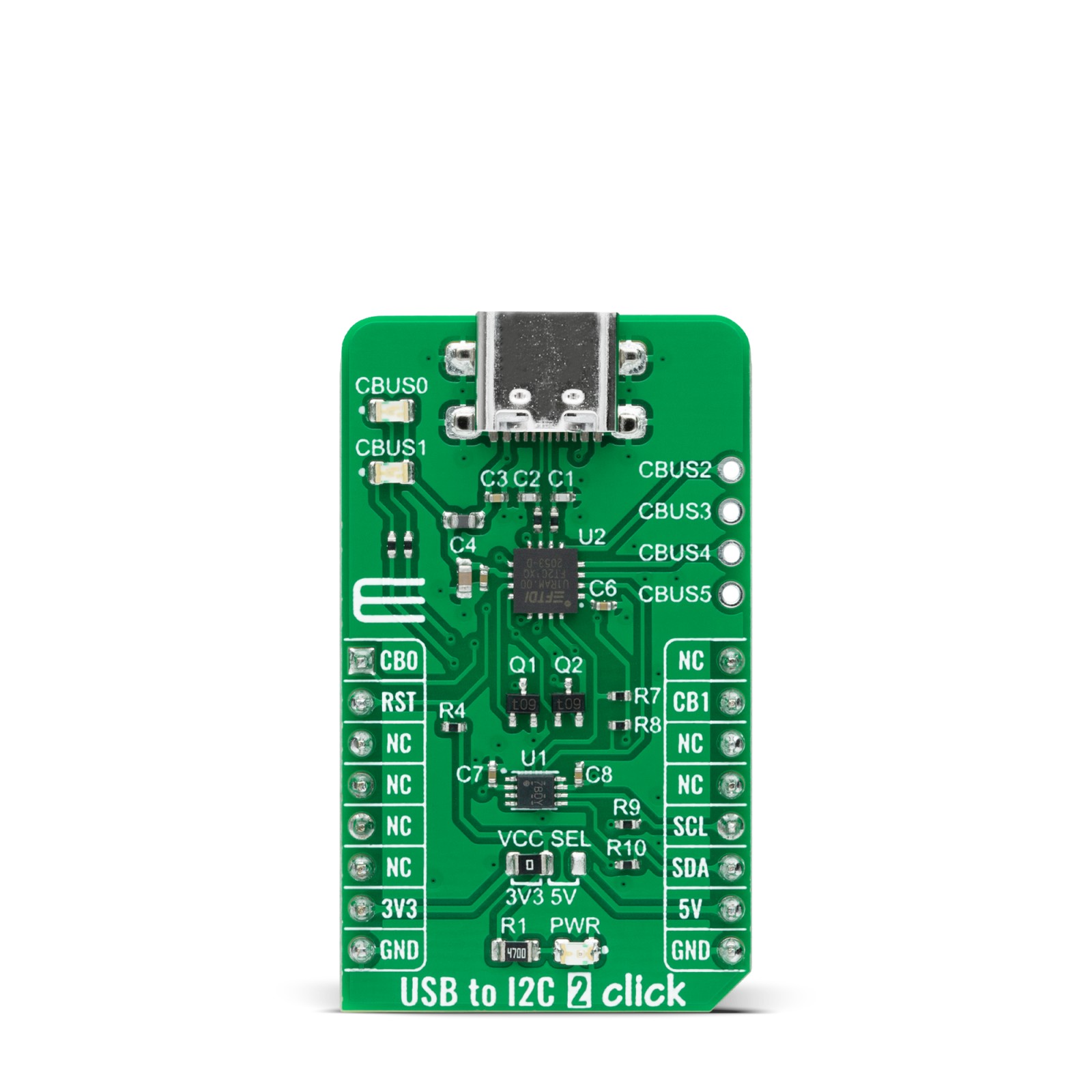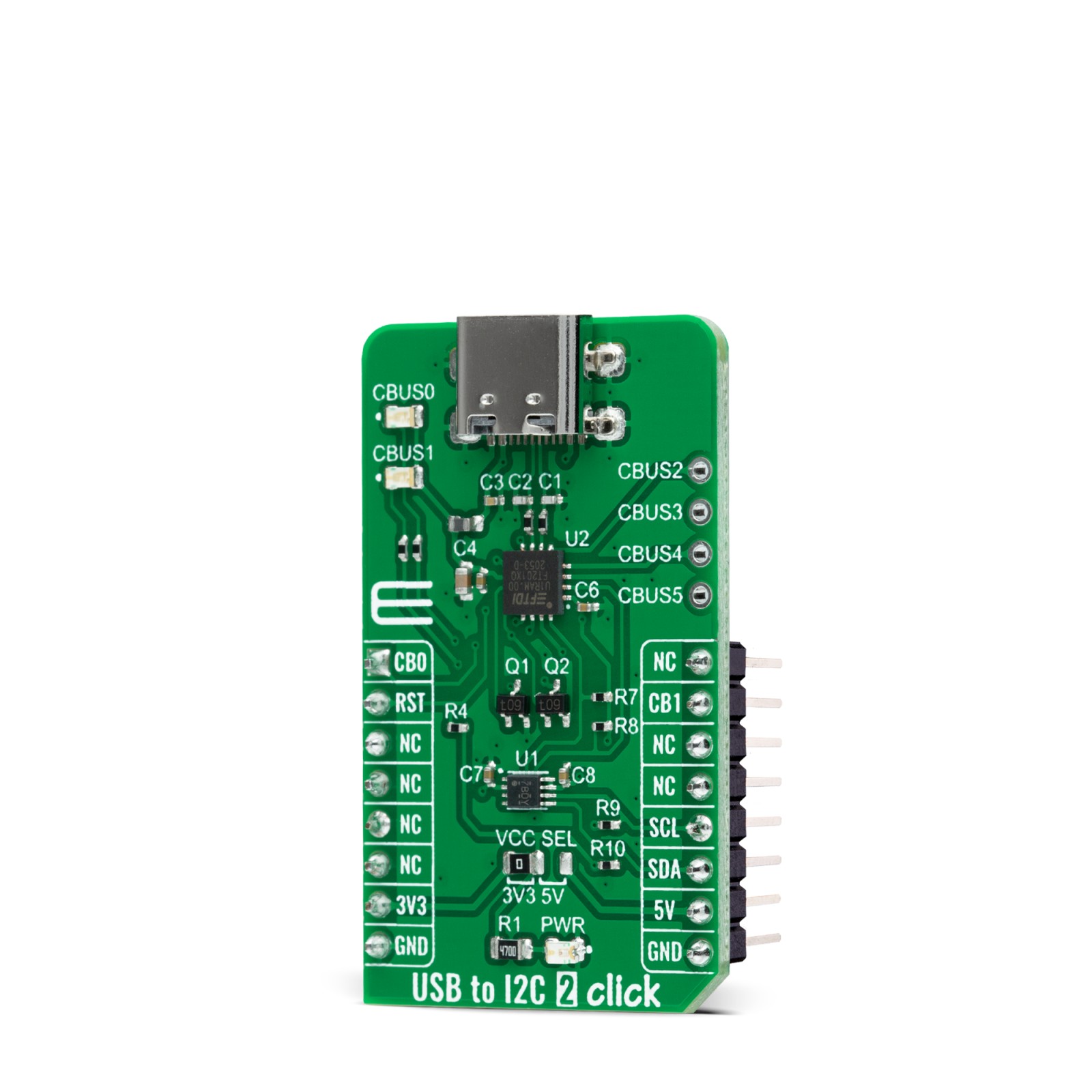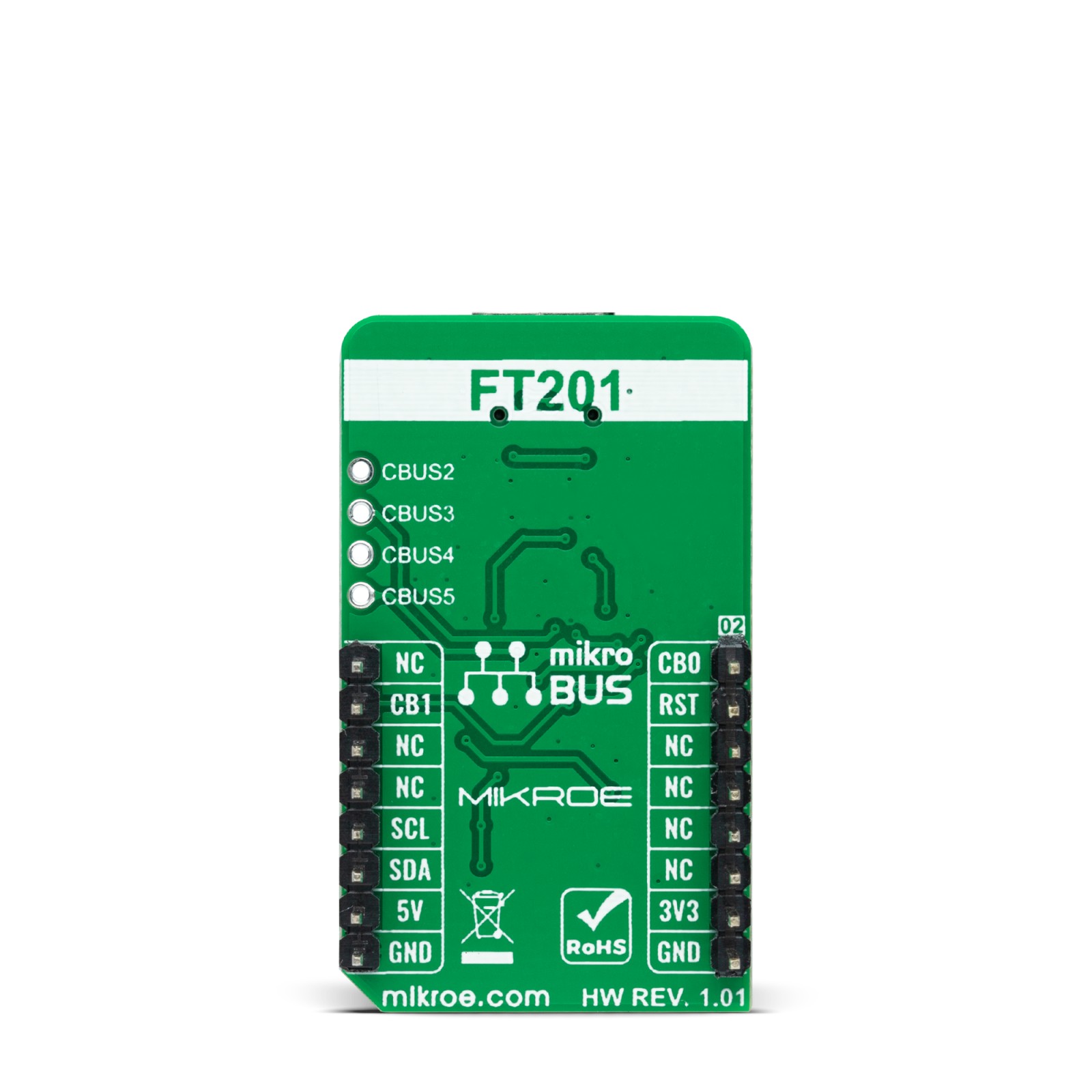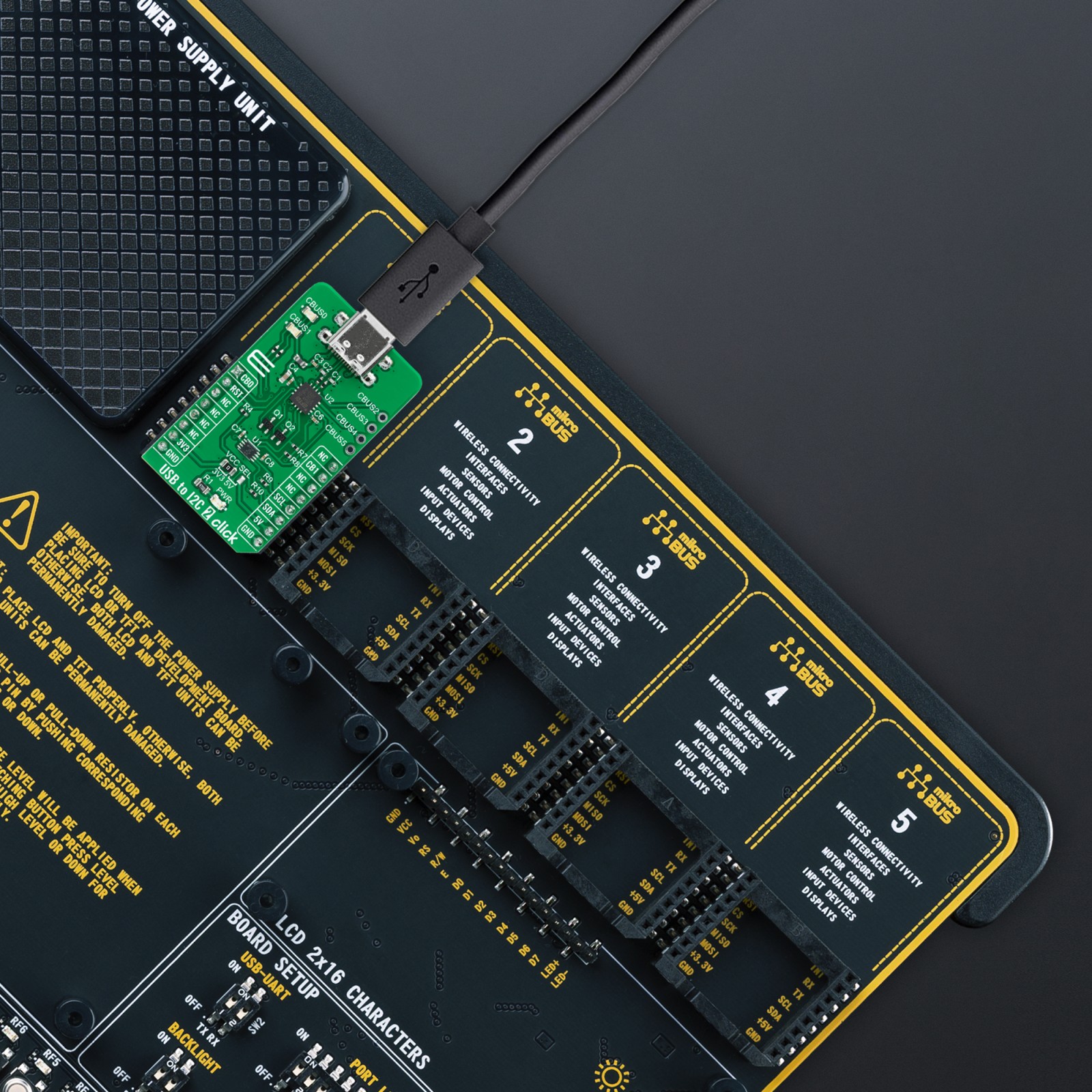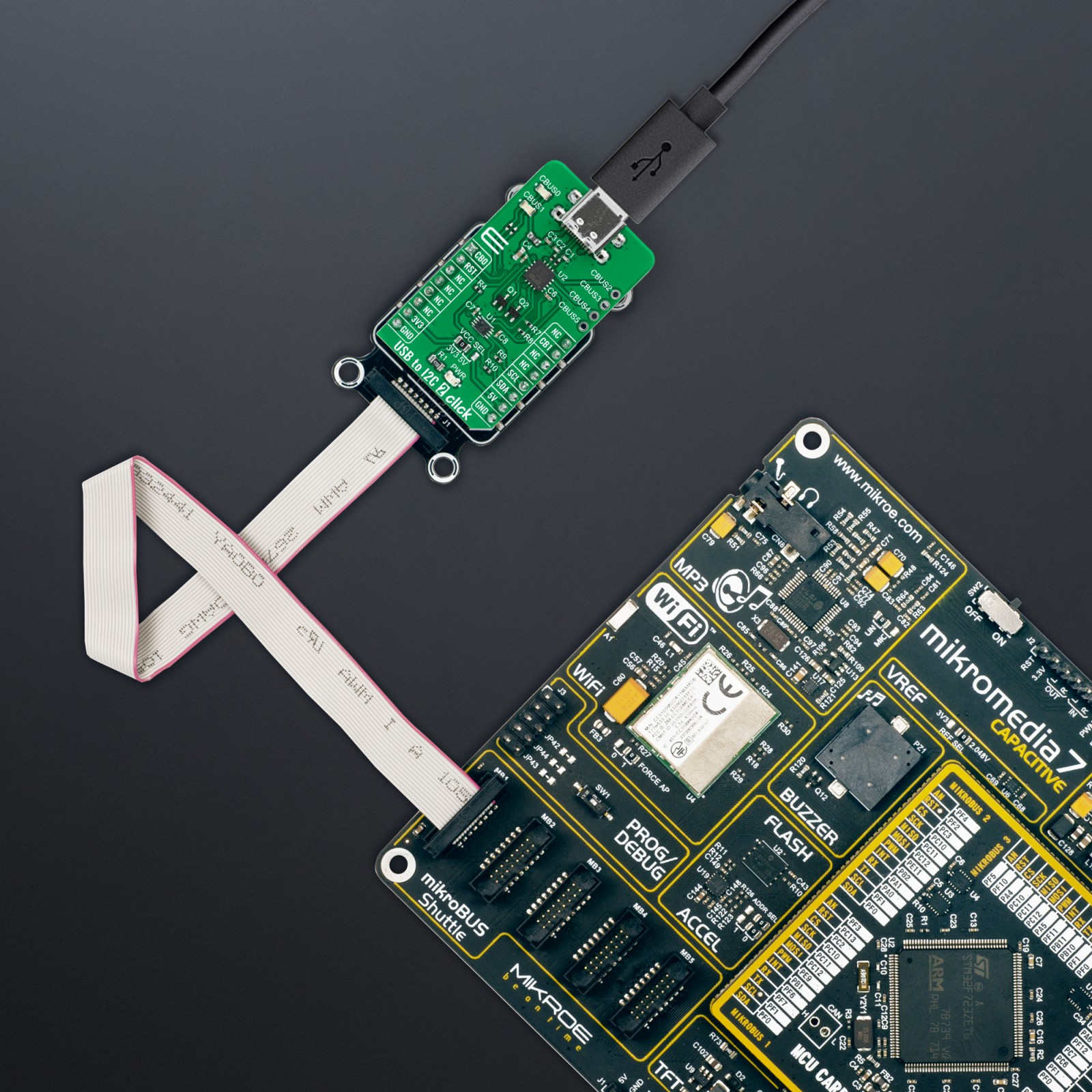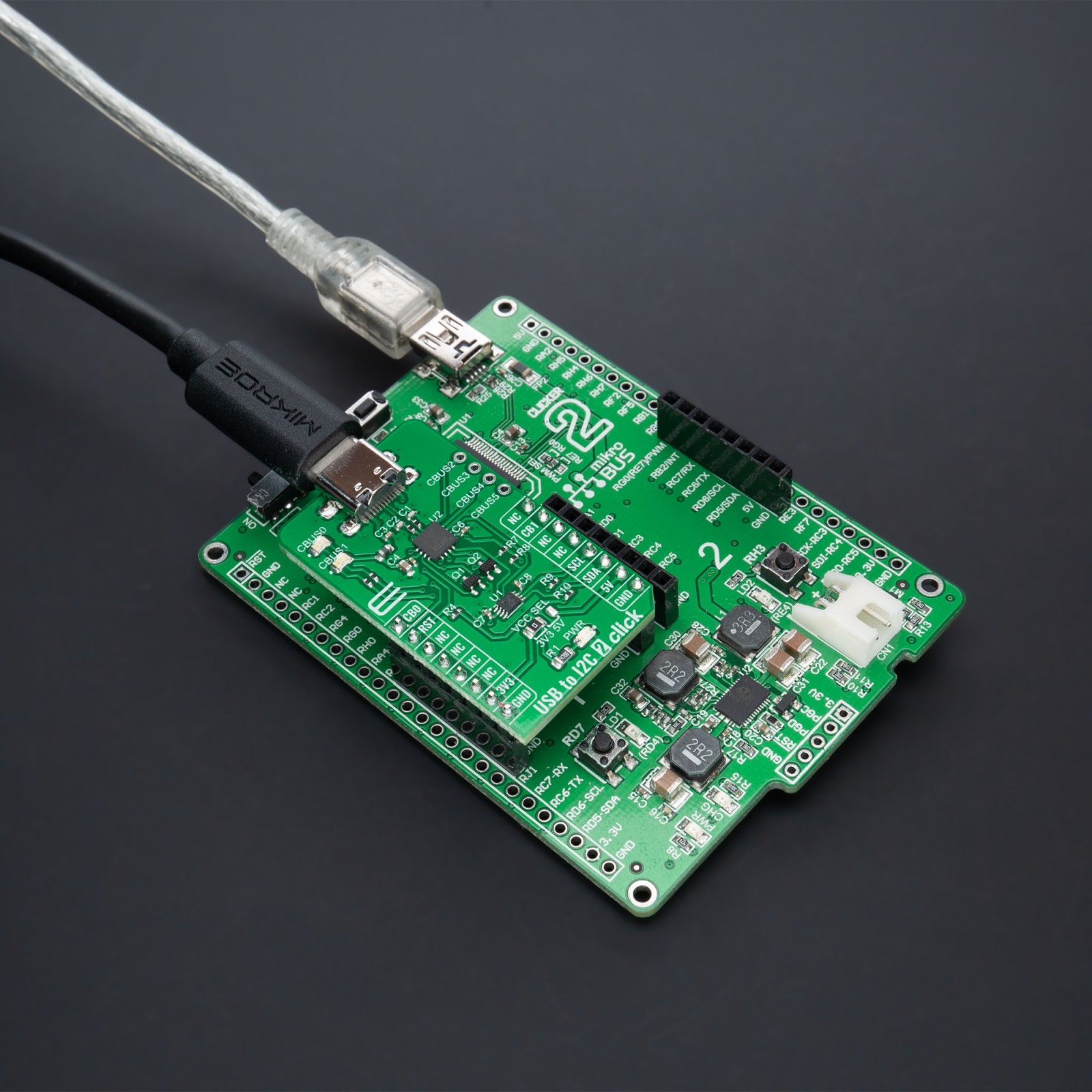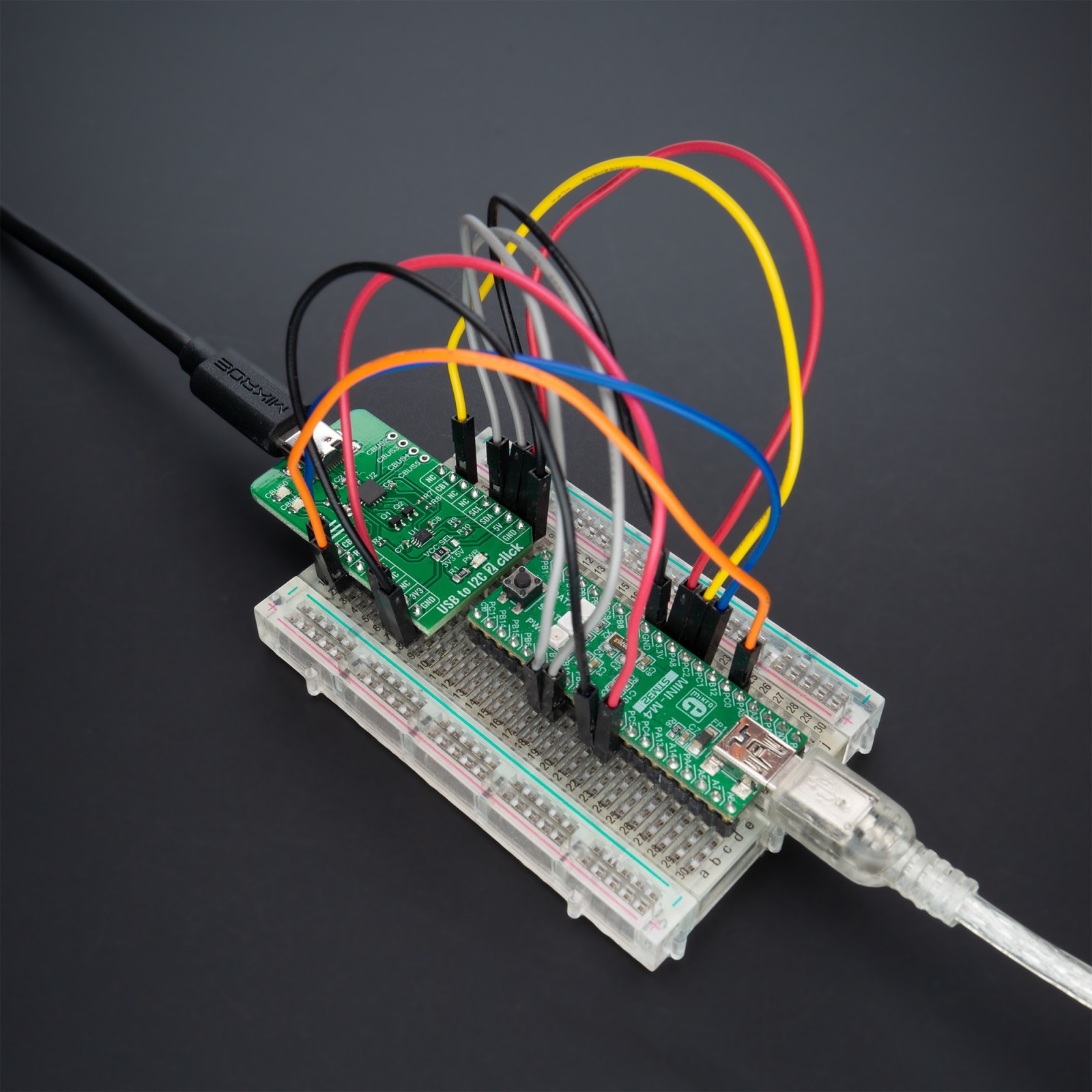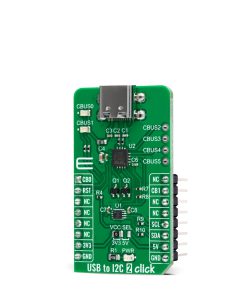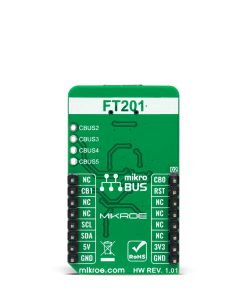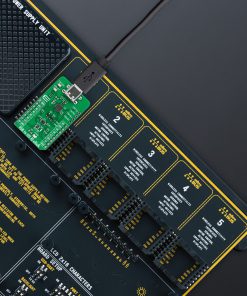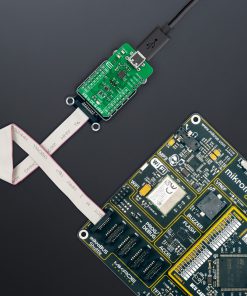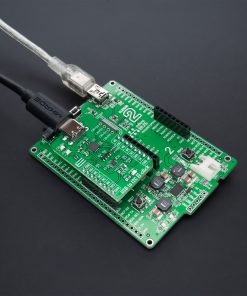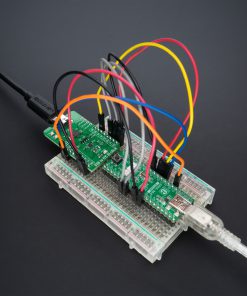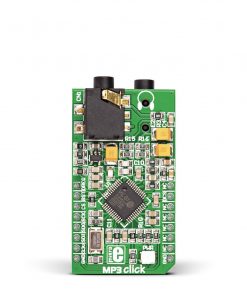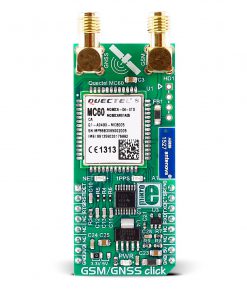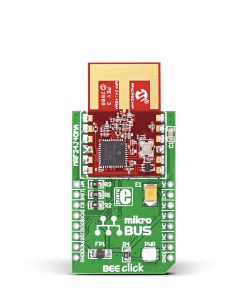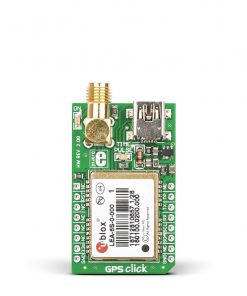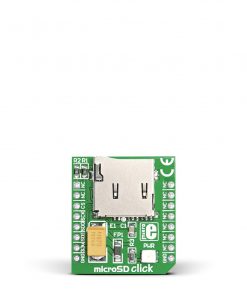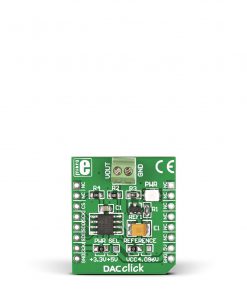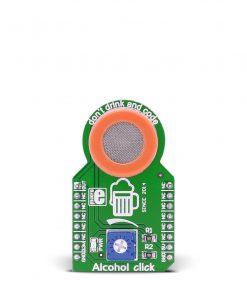USB to I2C 2 Click
R330.00 ex. VAT
USB to I2C 2 Click is a compact add-on board that contains a general-purpose USB to I2C serial interface. This board features the FT201X, a full-speed USB to I2C protocol slave IC from FTDI. The FT201X converts USB2.0 full-speed to an I2C serial interface capable of operating up to 3.4MBit/s, with low power consumption (typical 8mA). The entire USB protocol is handled on the chip itself, where no USB-specific firmware programming is required. It also has a fully-integrated 2048 byte Multi-Time-Programmable (MTP) memory for storing device descriptors and CBUS I/O user-desirable configuration. This Click board™ includes the complete FT-X series feature set and enables USB to be added into a system design quickly and easily over an I2C interface.
USB to I2C 2 Click is supported by a mikroSDK compliant library, which includes functions that simplify software development. This Click board™ comes as a fully tested product, ready to be used on a system equipped with the mikroBUS™ socket.
Stock: Lead-time applicable.
| 5+ | R313.50 |
| 10+ | R297.00 |
| 15+ | R280.50 |
| 20+ | R269.94 |

